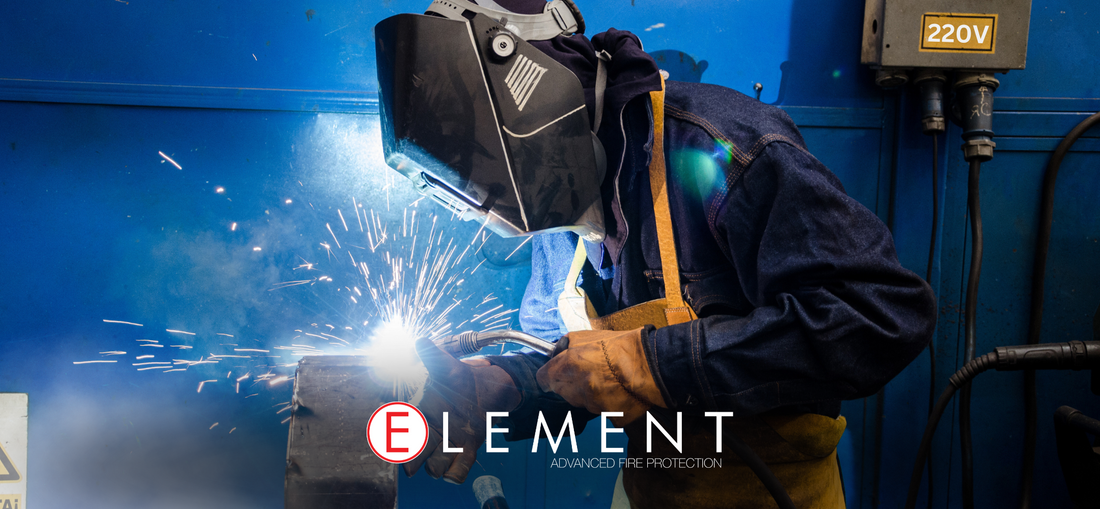The Mustard Gas from the WWI Battlefields May Be Lurking in your Workshop.
Welding is a common industrial task that involves high temperatures and often requires the utmost attention to safety. However, a lesser-known but deadly risk arises when chlorinated brake cleaners are used in or around welding operations. The heat of welding and the chemicals in these cleaners can lead to the formation of phosgene gas. Phosgene gas is better known as Mustard Gas!
Why Are Chlorinated Brake Cleaners Used During Welding

Chlorinated brake cleaners are often used during welding to clean and degrease metal surfaces before welding them. Many use it due to their effectiveness in removing oils and contaminants. However, these cleaners are not intended for such use and are extremely dangerous when exposed to the high temperatures during the welding process. Chlorinated cleaners can decompose and release a toxic gaseous byproduct called phosgene gas. This is a colorless, poisonous gas that was used as a chemical weapon in WW1 and was responsible for 85% of the gas related deaths (source). The use of these cleaners in welding is often due to its availability, effectiveness, and a lack of awareness about the severe risks of heating chlorinated solvents. The dangers of phosgene are severe. Neglecting proper safety measures during welding could potentially cause long-lasting respiratory problems and even death.
Safe Practices in Welding
To prevent the creation of phosgene gas and ensure a safe working environment, the following practices are recommended:
- Avoid Chlorinated Cleaners: Opt for non-chlorinated brake cleaners that do not produce harmful gasses under heat.
- Enhanced Ventilation: Implement effective ventilation systems in welding areas to dilute and remove dangerous fumes.
- Worker Education: Regular training on the hazards associated with welding and the chemicals used in the process is important to keep the workers safe.
- Protective Equipment: Use appropriate respiratory protection to guard against inhalation of toxic gasses.
Integrating Fire Protection Systems with Clean Extinguishing Agents
In addition to the preventative safety measures, integrating advanced fire protection systems, like a clean agent extinguisher, can further enhance workplace safety. Clean agent fire extinguishers are particularly suitable for environments where welding takes place because it provides an effective and safe fire suppression option where the risk of fire is much higher due to the presence of flammable materials, extreme heat productions and intricate electrical equipment.
Element is the Right Clean Agent Extinguisher for You!

To combat these risks, the advanced technology behind Element makes it a great tool. Element fire extinguishers utilize a clean agent that is non-toxic, non-conductive and does not leave any residue upon activation. This makes them particularly safe for use in spaces that are occupied by people. The extinguishing agent of Element does not pose an inhalation hazard like haloton. This is important in busy industrial settings where immediate evacuation may not be possible.
Benefits of Element's Clean Agent Fire Extinguishing Agent:
- Fights All Major Fire Classes: Element is effective for various types of fires. Including, Class A (Solid Combustibles), Class B (Flammable Liquids), Class C (Electrical Fires of up to 100,000V), and Class K (Kitchen Fires). This makes Element a suitable choice for diverse environments and applications.
- Residue-Free: Whereas traditional extinguishers leave a residue, Element does not! Element's clean agent discharge is made up of potassium, water vapor and inert gas. This leaves behind no residue for you to clean up. This is important in environments with sensitive machinery, electronics, or in places where cleanliness is paramount.
- Electrically Non-Conductive: Element's extinguishing agent is non-conductive. This makes it safe for use in environments with conductive materials and sensitive equipment of the electric nature.
- Non-Toxic: Element uses a non-toxic extinguishing agent that is safe to use in occupied spaces without posing any health risk to people present in the vicinity. This makes Element one of the very few environmentally friendly clean agent extinguishers available in the market today.
- Non-Corrosive: Element's clean agent does not contribute to the corrosion of any metals. This is valuable in preserving the integrity of materials, machinery and electronic devices at a welding facility.
The risks associated with using chlorinated brake cleaners in welding operations require heightened awareness and preventive actions to protect workers from the potentially deadly effects of phosgene gas. Businesses can ensure a safer working environment while protecting their valuable assets from fire damage and the hazards of toxic gasses by adhering to safety protocols and using the clean agent fire suppression systems like Element.

